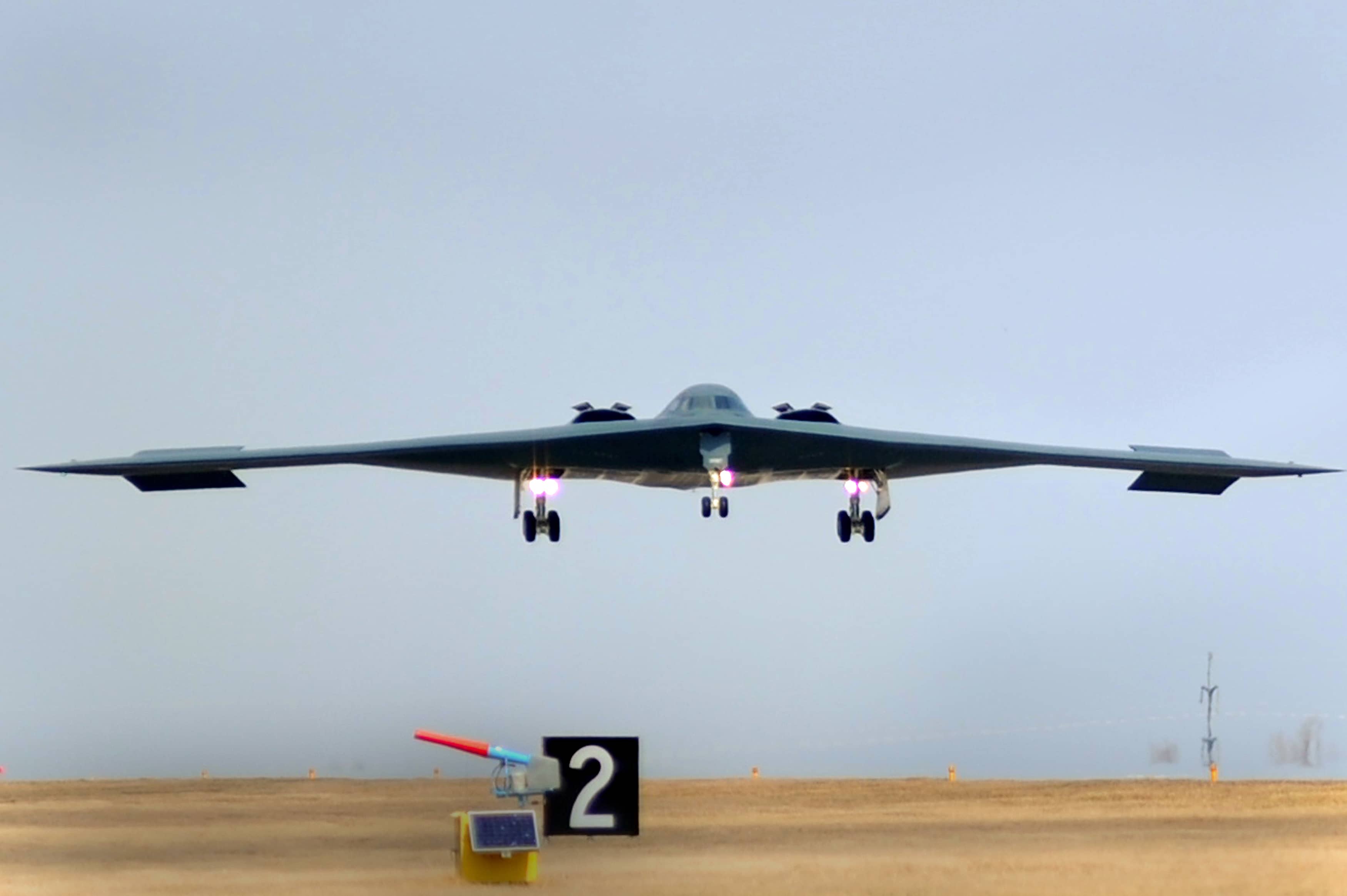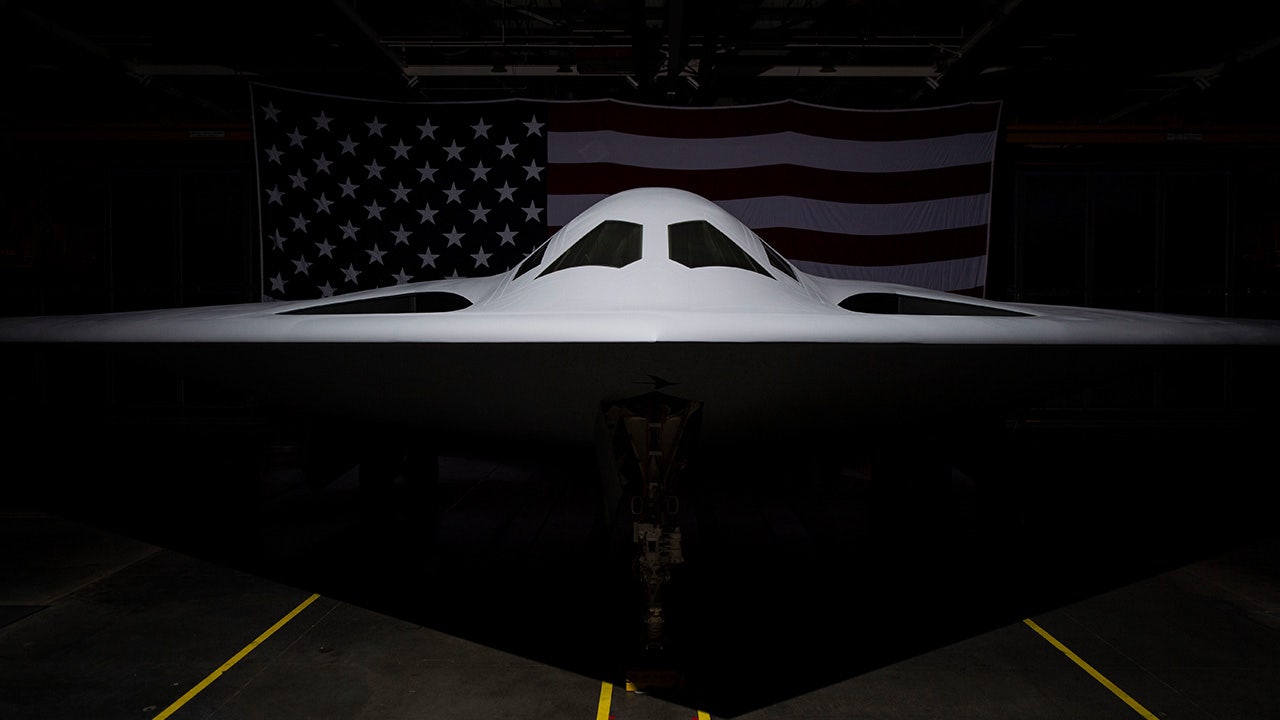B2 Bomber Interior - .) Cut the sky with bat-like wings, evade enemy radar with stealth technology, quietly destroy enemy air defense from 50,000 feet and the -use of computers to combine sensor data with target information - the air force's B-2 bomber. must have been in the air attacking targets before
"You pull up the weapon suite screen, aim the correct weapon at the target and provide input into the DEP - Digital Entry Panel. Then the text is entered into the computer," said Lt. Warrior in an interview. Colonel Nicola Polidor, Commander of Detachment 5 of the 29th Training Systems Squadron.
B2 Bomber Interior

B-2 pilots have operated the sleek, curved air defense-responsible platform many times over the past decade for highly sensitive and dangerous missions. After bursting onto the scene in the early 1990s, the B-2's combat debut came in the late 1990s when the aircraft destroyed Serbian targets over Kosovo. Three decades ago, the Air Force and Northrop Grumman greatly advanced the stealth attack paradigm, creating the first leap forward bomber of its kind. It was intended as a Cold War weapon, designed to take out advanced Soviet air defenses. The intention was to build and surpass the stealth technology of the F-117 Night Hawk that was used in the Gulf War.
Top Secret B 21 Raider Stealth Bomber Finally Revealed In High Powered Ceremony
The B-2s stealth configuration, buried engine, low heat signature and "radar absorbing" coating, is designed not only to avoid being hit by enemy weapons, but complete missions without the enemy ever knowing that it is there. Its main mission: launch covert, silent and undetected attacks on heavily defended enemy territory to create a safer "air corridor" for less hospitable aircraft to operate in extremely lethal, otherwise uninhabitable airspace.
Weapons selection, navigation data and intelligence analysis are all controlled by a human pilot, who operates a digital display, computer screen and fire control system in the air.
"We have eight displays and we can pull up different information depending on which buttons we press. We can see weapons, communications, flight characteristics, current atmospheric conditions, engines, electrical and hydraulic systems," said Polidor.
The aircraft, which entered service in the 1980s, flew missions over Iraq, Libya and Afghanistan. Because of its ability to fly up to 6,000 nautical miles without the need to refuel, Missouri's B-2 flew all the way to an island off the coast of India called Diego Garcia - before launching bombing raids over Afghanistan.
Fiction Story: A B 2 Spirit Stealth Bomber Is Downed During An Air Strike On A North Korean Nuclear Site
While the original technology may have come from the 1980s, many upgrades, modifications and technological improvements have sought to keep the bomber current, relevant and ahead of evolving threats.
"We went through at least 10 major modifications, some hardware and some software. The biggest difference in flying the B-2 today is the amount of information flow coming out of the cockpit," said Col. Jeffery Schreiner, 509th BW Commander and B Pilot -2, in an interview with Warrior. Schreiner has been involved with the B-2 bomber for more than 15 years.
Managing this massively increased flow of information has inspired new B-2 sensors, focused displays, communications networks and—perhaps most significantly—new computer automation and improvements in processors.

"Pilots manage all the different data sources to make good, tactically relevant decisions and maintain situational awareness. Now you can make specific changes and rework in flight," Schreiner said.
Wallpaper Aviation, Wallpaper, The Plane, Northrop B2 Bomber Images For Desktop, Section авиация
The upgrades include re-housing the flight management control processors, the brains of the aircraft, on much more integrated processing units. This results in the laying of some new fiber optic cable as opposed to the bus cable used previously - as the original B-2 computers from the 1980s could be overloaded with data in a modern warfare environment , Air Force officials explained.
Schreiner's strategic view of the B-2 modernization plan aligns with what top service thinkers think about future threats and necessary technical adjustments, especially regarding this need for information and networking. One prominent Air Force strategist, Lt. gen. Retired David Deptula, Dean of the Mitchell Institute for Aerospace Studies, describes this phenomenon in terms of the need for an emerging "combat cloud." The improved network technology, combined with new processing power, enables new and targeted sensors of the next generation to destroy newer threats and also maintain operations in case a single connection is damaged during the war.
"The challenge is this whole concept of sharing, and treating ships, cars and planes as information nodes. This builds the robustness and redundancy of the ability to share information," Deptula Warrior told.
Extending Deptula's reasoning, it seems clear that the modernization of the Air Force with the B-2 succeeded, in some ways, in anticipating future warfare environments.
Hide Cockpit Panel And/or Aircraft
One example of this is the B-2 Defense Management System now in development, a new sensor that allows B-2 crews to identify enemy hot spots and thus better avoid advanced air defenses.
A 2018 Air Force acquisition report examines some of the technical modifications that enable these advanced sensors, stating that the DMS "improves on-board threat warning systems by replacing antennas, electronics, aging display and autorouter."
The autorouter introduces what can easily be called a transformative technology for several main reasons; the report describes the autoloader as something "that automates the rescheduling of aircraft missions in flight." This brings several important consequences; increased automation reduces what is often called "cognitive load" for pilots. This frees pilots to focus on pressing combat variables as computer automation performs certain key procedural functions.

Second, by allowing "aircraft rescheduling in flight," the autorouter brings a major intelligence advantage. Instead of relying on predetermined target information, onboard intelligence can help pilots adjust attack missions when targets change and/or move .. in flight. Much of this improvement can be attributed to an ongoing effort to implement a new computer processor in the B-2, a system reported by Air Force developers to be 1,000 times faster than the existing system.
New B 21 Stealth Bomber Image Shows Stealth Windows
Given their 30-year lifespan, many may wonder how the B-2s have been maintained and remained combat-ready over the decades. B-2 maintenance 2nd Lt. Bruce Vaughn of the 131st Maintenance describes it as supporting welding, hull, tubing and sheet metal. Above all, he said, it was crucial to keep the detectable components and the radar-absorbing material low. "It involves a lot of painting and material management. A lot of times you apply it like spray paint,” Vaughn said.
Vaughn's description of the challenges and work required to maintain a stealth cloak, interestingly, is supported by a 2017 essay from the Robotics Institute of Carnegie Mellon University, called "Detection Technologies of 'Defects for Low Observability Aircraft Skin Covers.'" The document makes a point to highlight the importance, and difficulty, of keeping stealth materials on an aircraft.
"Due to mechanical trauma, water or other chemical trauma, natural or accelerated chemical degradation by sunlight or temperature, etc., the low visibility coating of an aircraft peels away from the substrate, flakes, blisters, cracks, or otherwise undergoes changes in texture or color . or both," the report says.
The essay also examines ways in which both ultraviolet and infrared lights can be used to detect wear or anomalies in the stealth coating. Computer algorithms, the paper explains, can also function as an integral part of the process.
B 2 Bomber Ejection Seat Upgrade
Along with cloaking, there are a handful of additional important variables needed to maintain stealth. The B-2 is not only curved, but also completely horizontal, with no vertical structures. This creates a scenario where a returning electromagnetic ping, or radar signal, cannot get an actual view of the aircraft. The exterior is both smooth and curved, with no visible seams connecting parts of the hull. Weapons are carried internally, antennas and sensors are often built into parts of the fuselage itself to minimize shapes found on the aircraft. By not having any protruding objects, shapes or certain vertical configurations such as fins, the bomber manages to confuse the enemy's radar, which cannot generate enough returning electromagnetic "pings" to determine the presence of an aircraft. An essential premise of B-2 support is that the aircraft be prepared to succeed in the most "high threat" or "challenging" combat environments likely to exist.
The intention is to avoid not only the higher frequency engagement radar, which allows air defense to actually shoot down an aircraft, but also to avoid the lower frequency surveillance radar, where it can simply detect an aircraft nearby. Also, stealth planes like the B-2 are built with an internal, or buried, engine to reduce the heat signature coming from the exhaust. One goal of stealth aircraft thermal management is to try to make the aircraft itself somewhat in tune with the surrounding air temperature so as not to create a heat differential for enemy sensors to detect.
The priority, maintainers explain, is to ensure that weapons, electronics, computers and stealth features are all constantly updated. Today's B-2 can almost be described in some ways as a completely different aircraft with the same basic exterior - than it was on its first flight in 1989.

The Air Force currently operates 20 B-2 bombers, the majority of which are based at Whiteman AFB in Missouri. The B-2 can reach an altitude of 50,000 feet and carry 40,000 pounds of payload, including both conventional and nuclear weapons.
Top Secret: We Can Now Show You Inside The Cockpit Of A B 2 Stealth Bomber
One emerging nuclear weapon, now being tested and integrated on the
Sig p365 tulster holster, sig p365 iwb holster, sig holsters p365, sig p365 sas holster, sig p365 xl holster, sig p365 hybrid holster, appendix holster sig p365, safariland holster sig p365, sig p365 belt holster, sig p365 holster, sig p365 purse holster, sig sauer p365 holster
0 Comments